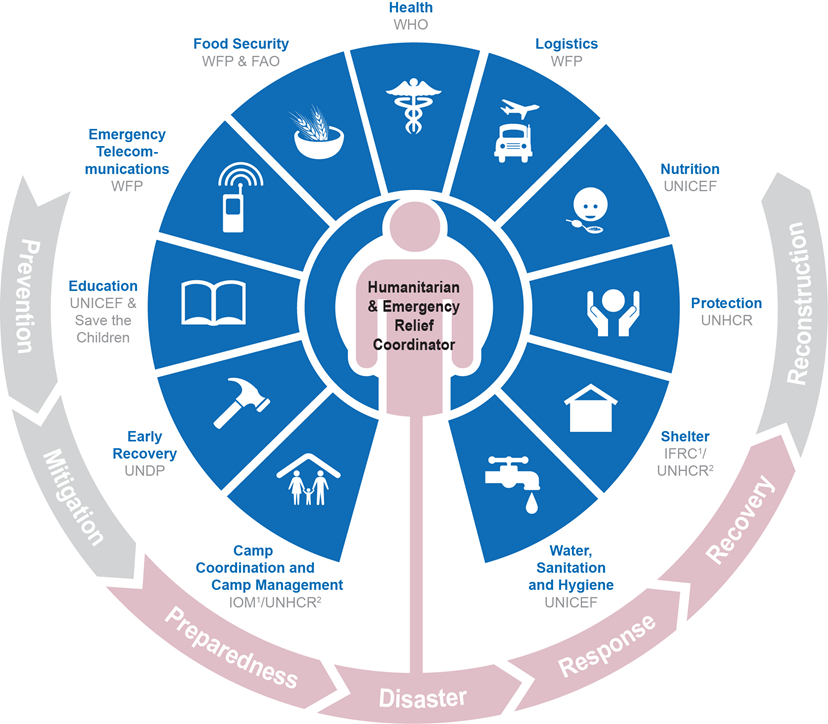When emergencies occur coordination is necessary. Good coordination means less gaps and overlaps in the assistance delivered by humanitarian organizations.
The foundations of the current international humanitarian coordination system were set by General Assembly resolution 46/182 in December 1991. Almost 15 years later, in 2005, a major reform of humanitarian coordination, known as the Humanitarian Reform Agenda, introduced a number of new elements to enhance predictability, accountability and partnership. The Cluster Approach was one of these new elements.
Clusters are groups of humanitarian organizations, both UN and non-UN, in each of the main sectors of humanitarian action, e.g. water, health and logistics. They are designated by the Inter-Agency Standing Committee (IASC) and have clear responsibilities for coordination.


